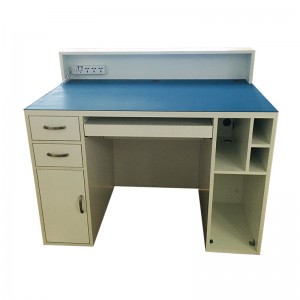ຕ.ລ. . 05, 2024 12:29 Back to list
Effective Strategies for Shop Fit-Out Planning and Design
Understanding Shop Fit-Out A Comprehensive Guide
The retail industry is ever-evolving, and one of the critical aspects that significantly influences a store's success is its layout and design—this is where shop fit-out comes into play. Shop fit-out refers to the process of designing and constructing the interior of a retail space, encompassing everything from flooring and lighting to shelving and display units. A well-executed shop fit-out can not only enhance the aesthetic appeal of a store but also improve customer experience and drive sales.
Why Shop Fit-Out Matters
The importance of a well-planned shop fit-out cannot be overstated. Retail spaces are the first point of contact for customers, and the way a shop is designed can shape the customer's perception of the brand. An attractive and functional layout can encourage customers to spend more time in the store, explore different products, and ultimately increase conversion rates.
Furthermore, an effective fit-out can help communicate the brand's identity. Different brands have unique philosophies and target demographics, and the design of the store should reflect this. For instance, a high-end fashion retailer may choose luxurious materials and a minimalist design to evoke exclusivity, whereas a family-friendly toy store may adopt a bright, colorful theme to appeal to children.
Key Elements of Shop Fit-Out
1. Layout The layout of a retail space is fundamental to customer flow. It should be intuitive, leading customers through the space in a way that showcases products effectively. An open layout with clearly defined sections encourages exploration, while strategic placement of high-demand items can guide customers toward other products.
shop fit out

2. Lighting Lighting plays a crucial role in creating ambiance and highlighting products. A well-lit space can make products look more appealing, whereas poor lighting can detract from the shopping experience. Using different types of lighting—ambient, task, and accent—can create layers and enhance the overall atmosphere of the store.
3. Display and Shelving Effective displays can attract attention and present products in the best light. Shelving options should be versatile to accommodate various products and heights, allowing for creative arrangements that capture customer interest. Incorporating technology, such as digital displays, can also enhance product visibility and engagement.
4. Color and Materials The choice of colors and materials significantly influences customer emotions and perceptions. Warm colors may create a welcoming atmosphere, while cooler tones can evoke calmness. The materials used should not only align with the brand's image but also withstand the wear and tear of a retail environment.
5. Comfort and Accessibility Ensuring that a shop is comfortable and accessible is essential. Adequate spacing for walking, seating areas, and clear accessibility for individuals with disabilities should be prioritized in the fit-out design.
Conclusion
A successful shop fit-out combines aesthetics with functionality, ultimately creating an environment that attracts and retains customers. Investing in a thoughtful design not only enhances the shopping experience but also reinforces brand identity and drives sales. As retailers strive to stand out in a competitive market, the significance of a well-executed shop fit-out will only continue to grow. If you're considering a fit-out for your retail space, take the time to plan, consider your brand's unique needs, and consult with professionals who can help bring your vision to life.
-
The Benefits of Electronic Shelf Labels for Modern Stores
NewsJul.01,2025
-
Space-Saving Retail Store Furniture Designs for Small Shops
NewsJul.01,2025
-
Slatwall vs. Gridwall: Which Store Fixture is Right for Your Business?
NewsJul.01,2025
-
Shop Fittings: Essential Elements for a Functional Retail Space
NewsJul.01,2025
-
How to Design a Minimalist Cosmetic Shop Display
NewsJul.01,2025
-
Creative Clothes Shop Display Ideas to Attract More Customers
NewsJul.01,2025


















































































































